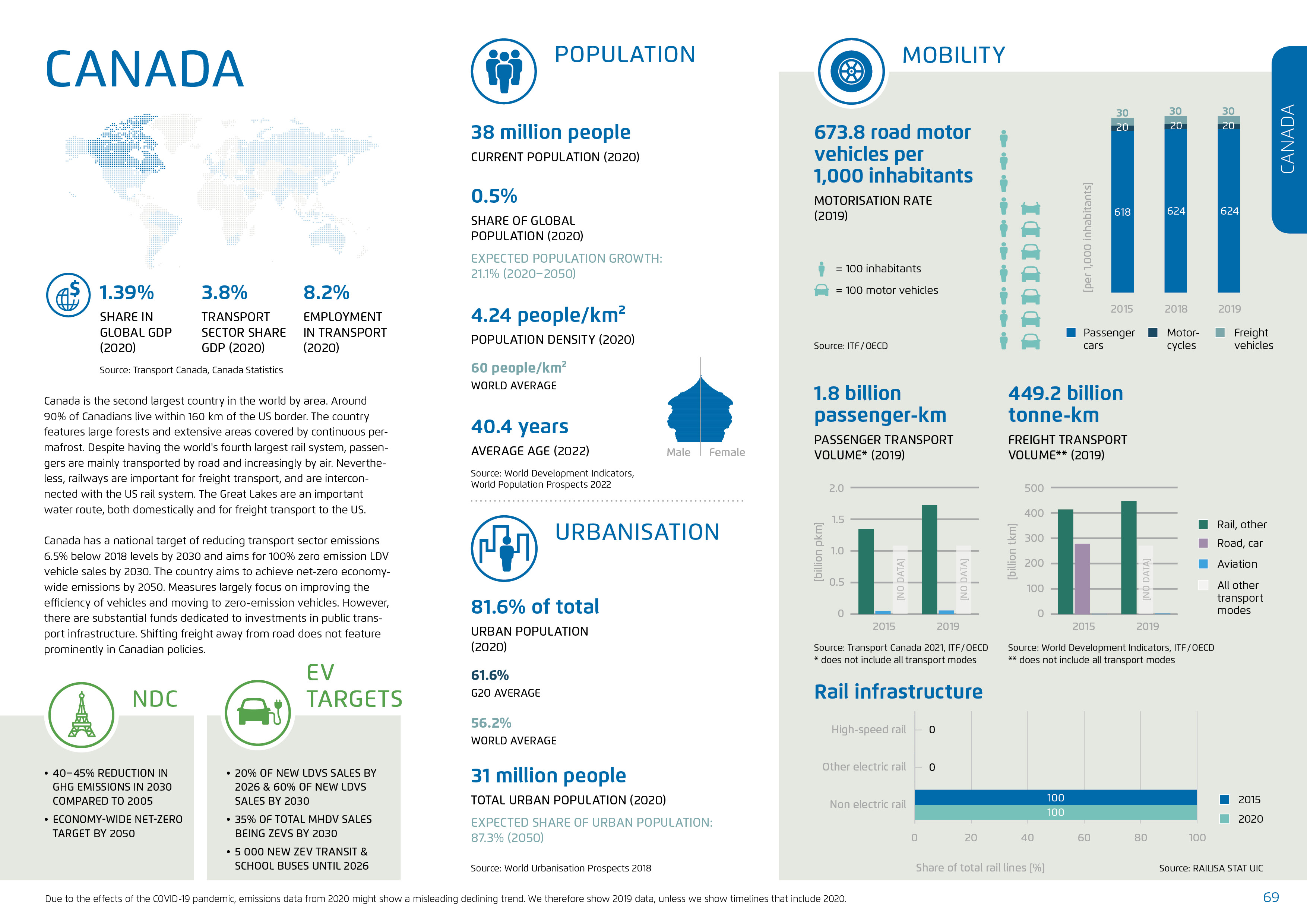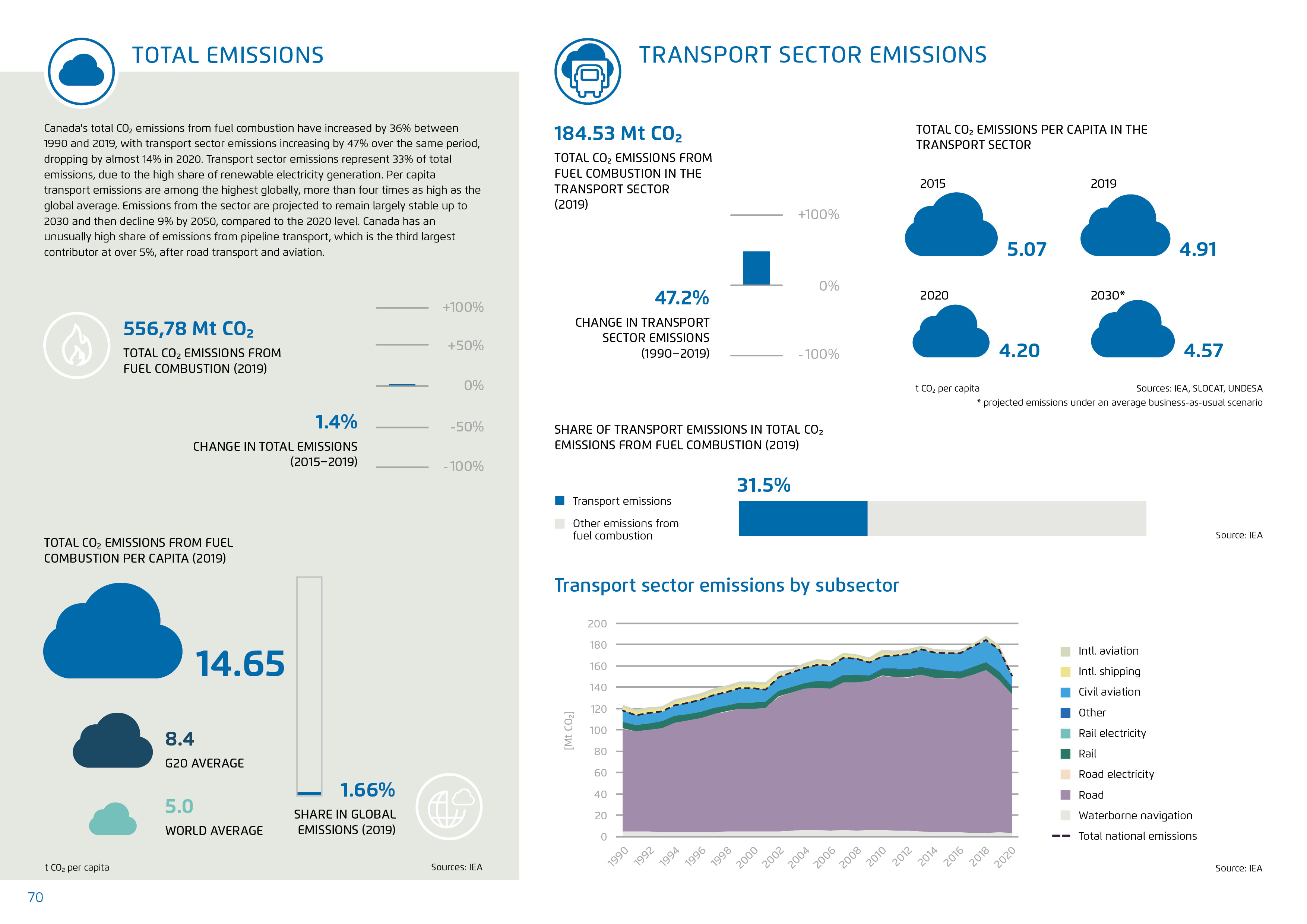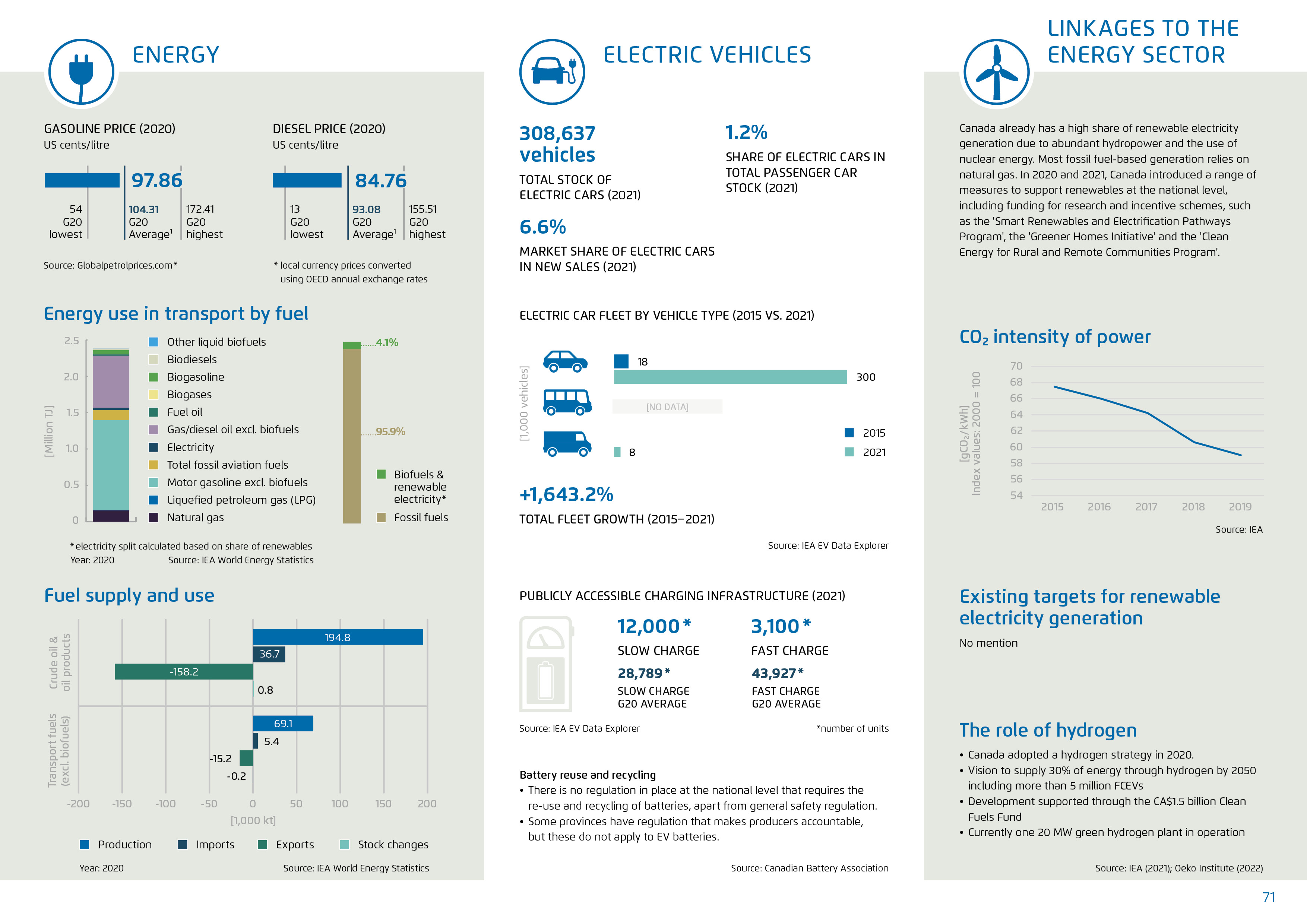This content is also available in: German
Canada
Net-zero target: 2050 / Motorisation rate (2020): 673,8 vehicles per 1,000 inhabitants / Change in transport sector emissions (1990-2019): 47,2 % / Projected total CO2 emissions per capita in the transport sector in 2030: 4,57 t
Canada is the second largest country in the world by area. Around 90% of Canadians live within 160 km of the US border. The country features large forests and extensive areas covered by continuous permafrost. Despite having the world's fourth largest rail system, passengers are mainly transported by road and increasingly by air. Nevertheless, railways are important for freight transport, and are interconnected with the US rail system. The Great Lakes are an importantwater route, both domestically and for freight transport to the US.
Canada has a national target of reducing transport sector emissions 6.5% below 2018 levels by 2030 and aims for 100% zero emission LDV vehicle sales by 2030. The country aims to achieve net-zero economywide emissions by 2050. Measures largely focus on improving the efficiency of vehicles and moving to zero-emission vehicles. However, there are substantial funds dedicated to investments in public trans-port infrastructure. Shifting freight away from road does not feature prominently in Canadian policies.
Key figures on transport and climate
Published in Towards Decarbonizing Transport 2023.








